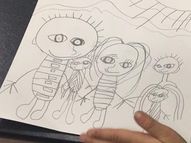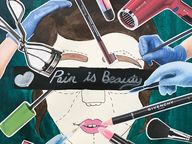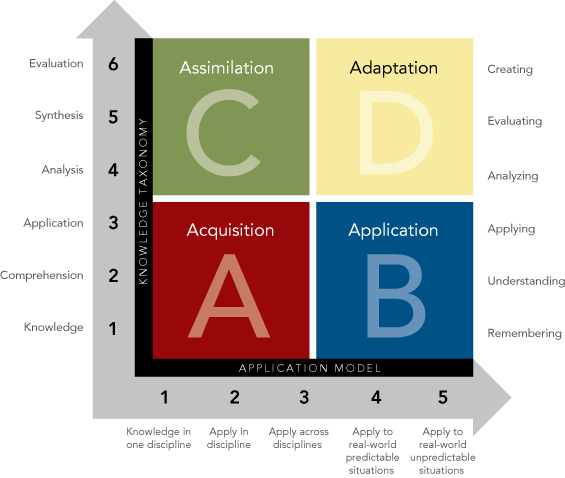Important steps In Designing UnitsStep 1: Determine & Unpack Standards
Step 2: Group Standards into Units Step 3: Identify Enduring Understandings tied to standards Step 4: Decide Themes to frame the unit Step 5: Design Essential Questions within the Unit Theme Step 6: Create Unit Performance Assessment to Assess Priority Standards Step 7: Write Lessons that Build Skills to the Assessment - Inquiry-based Lesson Design - What is Inquiry? - Inquiry-based Lesson Tips - Teaching through Inquiry in Art - Inquiry-based Lesson Design - Inquiry-based Lesson Structure Elementary UNITsComing Soon...
Middle School UNITSComing Soon...
High School UNITSComing Soon...
|
What is Inquiry-Based teaching?Inquiry-based learning is a pedagogical approach that starts by posing questions, problems or scenarios—rather than simply presenting established facts or portraying a direct path to knowledge. It invites students to explore content through personal or guided investigations and puts students' questions at the center. The process is often assisted by a facilitator. Inquirers identify and research issues and questions to develop their knowledge or solutions.
Specific learning processes that people engage in during inquiry-learning include:
In art, students should...
There are many different explanations for inquiry teaching and learning and the various levels of inquiry that can exist within those contexts. The article titled The Many Levels of Inquiry by Heather Banchi and Randy Bell (2008) outlines four levels of inquiry.
Banchi and Bell (2008) explain that teachers should begin their inquiry instruction at the lower levels and work their way to open inquiry in order to effectively develop students' inquiry skills. Open inquiry activities are only successful if students are motivated by intrinsic interests and if they are equipped with the skills to conduct their own research study. The way that we have utilized inquiry-based learning in art usually falls into a structured or guided level of inquiry, but as art students progress towards advanced levels, such as Advanced Placement or International Baccalaureate programs, we see levels of Open or True Inquiry. Inquiry-based learning is fundamental for the development of higher order thinking skills. According to Bloom's Taxonomy, the ability to analyze, synthesize, and evaluate information or new understandings indicates a high level of thinking. Teachers should be encouraging divergent thinking and allowing students the freedom to ask their own questions and to learn the effective strategies for discovering the answers. The higher order thinking skills that students have the opportunity to develop during inquiry activities will assist in the critical thinking skills that they will be able to transfer to other subjects. It is significant to scaffold students to teach them how to inquire and inquire through the four levels. It cannot be assumed that they know how to inquire without foundational skills. Scaffolding the students at a younger age will result in enriched inquiring learning later. A tool helpful in measuring for scaffolding in learning is the Rigor/Relevance framework. The Rigor/Relevance Framework is a tool developed by the International Center for Leadership Education to examine curriculum, instruction, and assessment along the two dimensions of higher standards and student achievement. It can be used in the development of both instruction and assessment. (They offer a helpful overview of the framework on their website: www.leadered.com) The Knowledge Taxonomy (y-axis) is a continuum based on the six levels of Bloom's Taxonomy, which describes the increasingly complex ways in which we think. The low end involves acquiring knowledge and being able to recall or locate that knowledge. The high end labels the more complex ways in which individuals use knowledge, such as taking several pieces of knowledge and combining them in both logical and creative ways. The second continuum (x-axis)—created by Bill Daggett—is known as the Application Model. A continuum of action, its five levels describe putting knowledge to use. While the low end of the continuum is knowledge acquired for its own sake, the high end signifies action—use of that knowledge to solve complex, real-world problems and create projects, designs, and other works for use in real-world situations. It describes how we "apply" what we know. Like Bloom's Taxonomy, it has levels: 1. Knowledge in one discipline 2. Apply knowledge in discipline 3. Apply knowledge across disciplines 4. Apply knowledge to real-world predictable situations 5. Apply knowledge to real-world unpredictable situations On the low end of the continuum, we have the acquisition of knowledge. On the opposite end, we have knowledge being used in the real-world which is often highly unpredictable. The term "relevance" comes from the idea that learning is more relevant to the extent you can apply your knowledge to solve real-world problems and create real-world products. The Framework has four quadrants. • Quadrant A—Acquisition Students learn new information and are expected to be able to recall learning. – Thinking: Knowledge, comprehension – Application: Knowledge and application within a single discipline – Examples: Monet was an impressionist artist; Graphite, marker, and charcoal are all drawing media; 6 x 6 = 36; John Steinbeck wrote The Grapes of Wrath • Quadrant B—Application Students learn new information and are expected to be able to apply their learning in real-world situations. – Thinking: Knowledge, comprehension – Application: Apply across disciplines, apply to predictable and/or unpredictable situations – Examples: Create an artwork using proper technique; Shade a sphere to appear three-dimensional on a flat surface; How to make change from a purchase; Edit a paper using appropriate grammar • Quadrant C—Assimilation Students extend their knowledge to higher-levels, and may apply within the context of the classroom, but not in the real world. – Thinking: Analysis, Synthesis, Evaluation – Application: Knowledge and application within a single discipline – Examples: Use knowledge of value and form to create the realistic 3-dimensional look of a complex object on a flat surface; Copying artworks after a master example; Evaluation of political systems; conducting predetermined science experiments • Quadrant D—Adaptation Students apply their higher-level thinking skills to real world situations. – Thinking: Analysis, Synthesis, Evaluation – Application: Apply across disciplines, apply to predictable and/or unpredictable situations – Examples: Creating an original work of art; Designing a new object to solve a complex problem; Solving climate change; designing a software application Adding Rigor and Relevance The framework is designed as a tool for educators to move toward greater rigor in the thinking dimension and greater relevance in the application dimension. The goal: we can achieve higher academic standards and help prepare students for the real-world by adopting instruction, curriculum, and assessment that acknowledges the value of rigor and relevance. |



